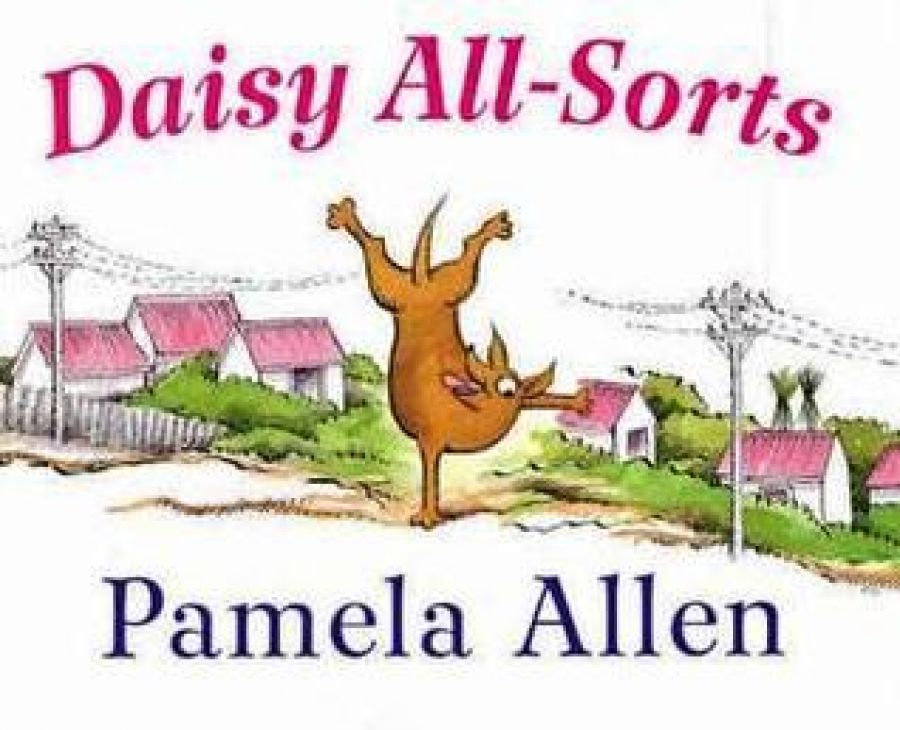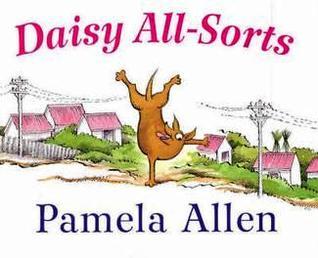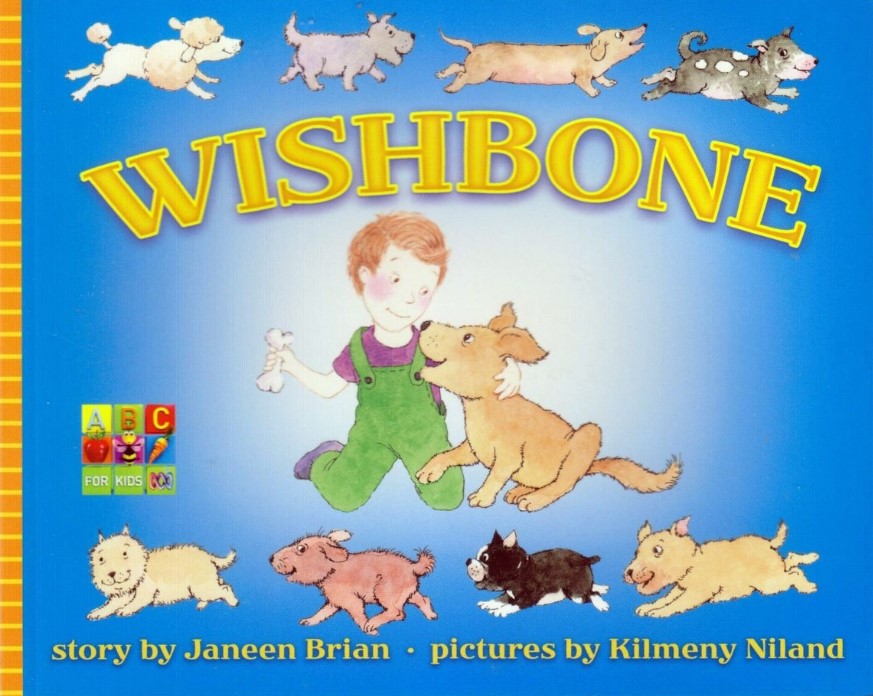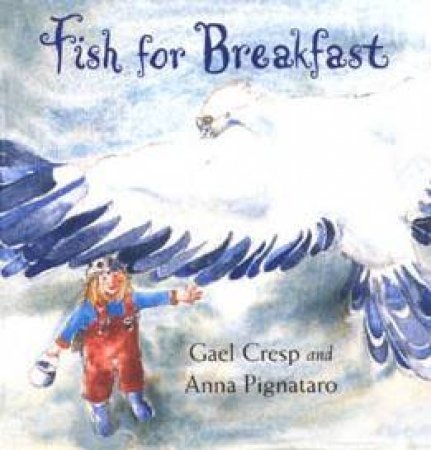
- Free Article: No
- Contents Category: Picture Books
- Custom Article Title: Moira Robinson reviews 5 Picture Books
- Review Article: Yes
- Article Title: Dream On
- Online Only: No
- Custom Highlight Text:
Reviewing is an odd business. One receives a seemingly random selection of books. The first task, after reading them, is to find a common denominator, some ‘glue’ to hold the review together. This time, the glue was easier to find than is sometimes the case. They are all picture books aimed at kindergarten or early to middle primary school, so if you want ideas about what to give your amazingly sophisticated twelve-year-old nephew, read no further. More seriously, to varying degrees they are all about longings and dreams. In Wishbone, Henry wishes he could have a dog, and the story recounts how his wish eventually comes true. Daisy All-Sorts actually is a dog, but she feels her life will only be complete if she can have liquorice all-sorts every day. Silverskin is about an albino python snake that spends most of the book wishing she looked more normal. A Day in the Life of Me describes a truly amazing day, but did it really happen or was it a dream? Similarly, Fish for Breakfast treads the borderline between waking and dreaming.
- Book 1 Title: Daisy All-Sort
- Book 1 Biblio: Viking, $25 hb, 32pp
- Book 1 Cover Small (400 x 600):

- Book 1 Cover (800 x 1200):

- Book 2 Title: Wishbone
- Book 2 Biblio: ABC Books, $25.95 hb, 32pp
- Book 2 Cover Small (400 x 600):

- Book 2 Cover (800 x 1200):

- Book 3 Title: Fish for Breakfast
- Book 3 Biblio: Benchmark, $24.95 hb, 32pp
- Book 3 Cover Small (400 x 600):

- Book 3 Cover (800 x 1200):

Daisy, in Pamela Allen’s story, has always found life ‘ordinary’ until the day Stanley, her owner, buys a bicycle and takes her to meet his friend Bella, who lives at the foot of the hill. Bella gives Daisy a bowl of water and then ‘from deep down inside her pocket’ she pulls out ‘THREE LIQUORICE ALL-SORTS’. Daisy becomes an instant all-sorts addict: ‘Now, every day, Bella waits with a little brown paper bag, “for Daisy”, and every evening Daisy dances’ in gratitude.
Pamela Allen, like Pat Hutchins, is a writer–illustrator who long ago discovered what she does well, and happily works within those parameters. The story here is simple, but told with an unerring ear for the rhythm of prose and for the fun of putting words together. She encourages little children to become curious about language by making words an important part of the pictures in addition to the text. Thus, as Stanley mounts his bicycle for the first time, he yells out ‘DAYZEEEEEEEEEE’, and the word stretches out over the double page. Again like Hutchins, Allen revels in clean white pages with uncluttered, bright paintings; there is a lovely sequence of Stanley trying to get Daisy balanced on his bicycle when she won’t leave Bella’s side. Inevitably, some pictures echo those of other books, particularly the ones of Daisy dancing just like the bear in Bertie and the Bear, but does it matter? A young child either won’t know both books or will seize on the similarity with the joy of recognition.
In Janeen Brian’s Wishbone, Henry longs for a dog, a ‘rough-and-tumble’ or a ‘happy-go-lucky’ or a ‘roly-poly dog’, but Mum refuses because there’s no one at home during the day. Henry makes do with the dog next door, which presents him with a bone. When he gets home, Mum is gardening and happens to say, ‘Whenever I plant anything, I make a wish’, so Henry secretly buries his bone and wishes hard. Mum’s beans grow tall, the bone patch remains ‘brown and bare’, but then, one morning, Henry hears ‘a small excited bark’ and there, beside the beans with its mouth full of bone, is a ‘little rough-and-tumble dog with … eyes as black as liquorice’.
Kilmeny Niland illustrates Brian’s simple, emotive text with her customary humour and verve. Like Allen, she chooses a hard white paper for her clear watercolour images. There are wonderful dogs, all hair and tongue, and a lovely series showing the beans coming up, first just a little green hump, then slowly unfurling into a tiny plant with leaves. There’s a moving picture of Henry lying on the grass, listening to his mother talk about wishes, and a flamboyantly green picture of Mum’s beans rampant in the garden.
Guundie Kuchling is fascinated by Australian wildlife, not by the usual run of ‘Kuddly Koalas’, but by insects’ mating habits in Mega Mega Mates and, here, by Large-blotched Pythons. There are not many picture books about pythons, blotched or otherwise, certainly not albino ones, but Kuchling makes us care about Silverskin. When she is born, her brothers and sisters hiss, ‘She’s so pale, so very, very pale. Is she really one of us?’, and Liasis slides away sadly, wondering the same thing. The rest of the book is her journey of self-discovery. She is helped by an echidna, shunned by a pair of lizards, captured by a Golden Orb-weaver spider, nearly killed by some water rats and finally is given a sense of self-worth by a kindly turtle, declaring triumphantly: ‘I like the way I am.’
Far from favouring white backgrounds, Kuchling relishes colour. The handsome spider and her large web stand out against a blue background, the baby pythons wriggle across a green page, galahs fly up against an ochre double page. Shapes are kept simple. Gap-mouthed toothy crocodiles, for example, watch as Liasis flicks herself across a deep blue sky.
Fish for Breakfast is not the prosaic story one might expect from its title. Rebecca, in her furry hat, is hunting for bait in the garden, ready to go fishing with Grandma, when she is suddenly whooshed into the sky by a short-sighted sea eagle who thinks she’s a possum. Luckily, Rebecca has in her pockets an old pair of Grandma’s glasses. She gives them to the eagle who is so thrilled with them that, after taking Rebecca back to Grandma’s, the bird catches a fish ‘just the right size for two’ and drops it at Rebecca’s feet.
Gael Cresp’s story is transformed into something magical by Anna Pignataro’s fluid sweeping watercolours. There is the most wonderful sense of freedom about her paintings, even those packed with detail such as her aerial views of the town with its gardens and washing lines, and the harbour full of bobbing boats. A fresh sea wind seems to blow through the book, bending the trees and breaking the sky into mares’ tails of cloud. The possibility that Rebecca may be dreaming is hinted at in the swirling picture where she is first picked up by the sea eagle, and in later ones where she has to stand on tiptoe to put the glasses onto the eagle’s beak.
One can only hope that the boy in A Day in the Life of Me, by John Marsden, is dreaming. He wakes up late, eats a gigantic breakfast and wanders off to school where his teacher, rapt to see him, says: ‘You can do anything you want.’ After a pretty cool day, he reaches home and his parents ask: ‘What would you like to do now?’ He opts for a simple evening of riding on the waterslide, ten-pin bowling and a meal at Macca’s. ‘It’s been a pretty nice day,’ he thinks that night in bed. ‘I wonder what tomorrow will be like.’
Every picture shows the fun Craig Smith had illustrating this tale of total self-indulgence. There’s Mum, stout and pink with bouffant hairdo, Ms Hargraves, bespectacled and terribly eager, and a great assortment of Craig-type kids. If there’s a saucepan on the stove, it’s just about to boil over; mayhem is always close at hand, whether playing pool in the classroom or T-ball outside. But the stars that Smith has dotted over the pictures and text warn us that sooner or later there will be a rude awakening; and the jacket, with its central panel showing a confident boy against a sunset, has dark night-coloured side panels. Dream on while you can.


Comments powered by CComment